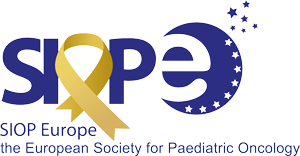Paediatric cancer accounts for the second cause of death in children. As a parent, you need to be aware of the symptoms of childhood cancer: although your paediatrician is probably a very good doctor, he/she may have never diagnosed childhood cancer. You need to know to trust your own intuition when you feel that there is really something wrong with your child, even if the doctor initially interprets the symptoms as a common child ailment.
The main types of paediatric cancers encountered are leukaemias, neuroblastomas, Wilms’ tumours, brain cancers, rhabdomyosarcomas, lymphomas, retinoblastomas, osteosarcomas and Ewing's sarcomas.
- Leukaemia is a cancer of the bone marrow, the spongy centre of the bones that makes blood cells. It accounts for approximately 35% of all childhood cancers. Although it is more common in children under the age of 10, approximately 1 in 1000 children are diagnosed with leukaemia by the age of 1.
- Neuroblastoma is a disease in which malignant (cancer) cells form in nerve tissue of the adrenal gland, neck, chest or spinal cord. It accounts for 5%-7% of all childhood malignancies and usually occurs by the age of 5.
- Wilms’ tumor is a type of kidney cancer also known as nephroblastoma. It accounts for 6-7% of childhood cancer cases. It occurs in about 8 in 1 million children under the age of 14, but is more common in children under the age of 5. Some children have a genetic tendency to develop Willms’ tumour, usually because other family members have developed Wilms’ or there have been certain development problems from birth.
- Brain cancers account for 15% of paediatric cancers. The symptoms depend on the location of the tumour. The two main types of brain tumours that affect children are gliomas and medulloblastomas. Gliomas develop from the supporting cells of the brain, which hold the nerve cells in place, and brainstem gliomas occur almost only in children. The average age of development is about 6 years old.Medulloblastoma originates in the cerebellum or posterior fossa, and may spread to other parts of the brain or into the spinal cord. Most medulloblastomas occur before the age of 10.
- Rhabdomyosarcoma is a fast-growing, highly-malignant soft-tissue sarcoma which develops in the muscle, mostly in the neck, head, bladder and testes. It accounts for 5-8% of childhood cancers. It usually affects children between the ages of 2 to 6 and 15 to 19.
- Lymphomas are malignant cell infiltrations of the lymphatic system located in the neck, armpit, and groin. Lymphomas are broadly classified as Hodgkin's and non-Hodgkin's. The two are distinguished by cell type. Hodgkin's generally occurs in individuals between 15-40 years of age.
- Retinoblastoma is a type of eye cancer that occurs in the retina of one, or both eyes. It is the most common eye tumour in children. Retinoblastoma accounts for 3-4% of all childhood cancers. It usually occurs before the age of 5
- Osteosarcoma and Ewing's sarcoma are the most common malignancies of bone tissues in children. Osteosarcoma is usually presents in bones around the knee whereas Ewing's sarcoma may affect bones of the pelvis, thigh, upper arm, or ribs. Bone cancers are most common in ages 10-20 and they account for about 6% of all childhood cancers.
